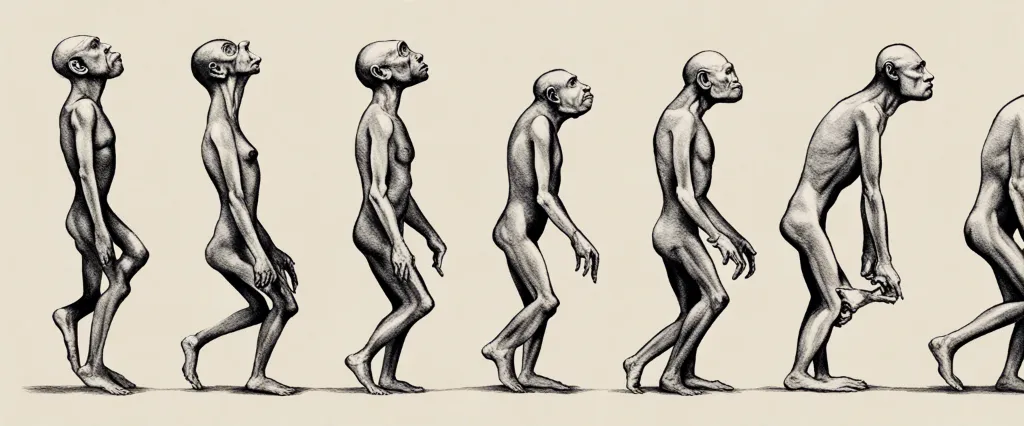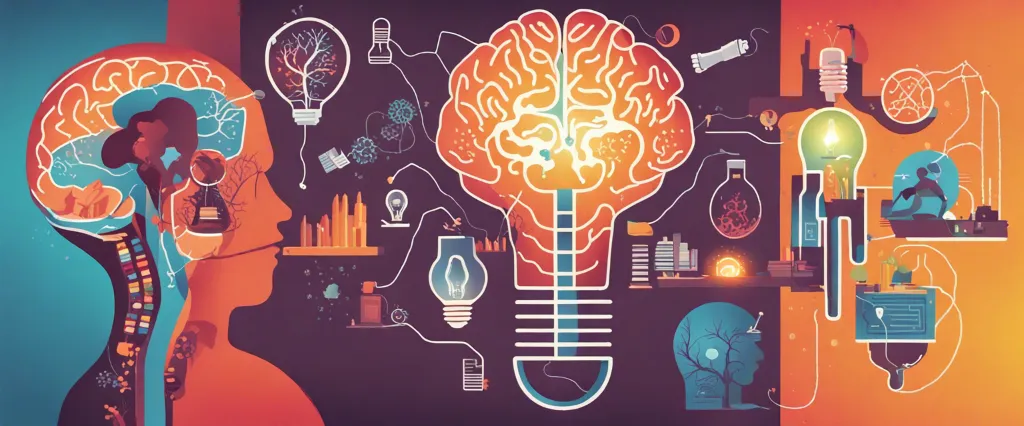In “Why Is Sex Fun? The Evolution of Human Sexuality,” Jared Diamond explores the biological and evolutionary underpinnings of human sexuality. As a renowned scientist and Pulitzer Prize-winning author, Diamond delves into the complexities of human sexual behavior and examines how various forces of natural selection have shaped our reproductive strategies. Through a combination of evolutionary theory and anthropological research, Diamond offers a compelling exploration of the ways in which sexual desire, attraction, and behavior have evolved to ensure the survival of our species.
Chapter 1: Introduction to the evolutionary puzzles of human sexuality.
In Chapter 1 of “Why Is Sex Fun? The Evolution of Human Sexuality” by Jared Diamond, the author introduces the concept of human sexuality as a product of evolution. Diamond explores the evolutionary puzzles surrounding human sexuality, such as why humans have sex for pleasure rather than just for reproduction like most other animals.
He discusses the theory of sexual selection and the role it has played in shaping human mating behaviors. Diamond also delves into the differences between male and female reproductive strategies, examining how they have evolved over time and how they influence human sexual behavior.
Additionally, Diamond addresses the concept of monogamy and why it is a rare phenomenon in the animal kingdom, including among humans. He touches on the reasons why humans engage in pair bonding and how it has evolved as a way to ensure parental investment in offspring.
Overall, Chapter 1 sets the stage for the book by providing an overview of the evolutionary foundations of human sexuality and the various puzzles that arise when trying to understand the complexities of human mating behavior. Diamond’s exploration of these themes sets the groundwork for a deeper dive into the evolution of human sexuality in the subsequent chapters of the book.
Chapter 2: Exploration of the diversity of human sexual behavior across cultures.
In Chapter 2 of “Why Is Sex Fun? The Evolution of Human Sexuality,” Jared Diamond explores the diversity of human sexual behaviors across different cultures. Diamond examines how various societies around the world approach sexuality, including differences in attitudes towards monogamy, non-monogamy, homosexuality, and fertility.
He discusses how cultural norms and beliefs shape human sexual behaviors and relationships, highlighting how societal expectations and taboos can influence the way individuals express their sexuality. Diamond also delves into the role of religion, politics, and economics in shaping sexual practices, along with the impact of globalization on changing attitudes towards sex.
Throughout the chapter, Diamond presents examples of how different cultures throughout history have approached sexuality, highlighting the wide range of practices and beliefs that exist. He emphasizes that while there is diversity in human sexual behavior, there are also common themes that permeate all societies, such as the importance of reproduction, social bonds, and pleasure.
Overall, Diamond’s exploration of the diversity of human sexual behavior across cultures provides insight into the complexity of human sexuality and the ways in which societal norms and values influence individual behavior.
Chapter 3: Insights into the biological and evolutionary purposes of sex.
Chapter 3 of “Why Is Sex Fun? The Evolution of Human Sexuality” by Jared Diamond delves into the biological and evolutionary reasons behind the existence of sex. Diamond argues that the primary purpose of sexual reproduction is to increase genetic diversity, which in turn enhances the chances of species survival in changing environments. This is achieved through the reshuffling of genetic material during meiosis and the mixing of genes from two parents, leading to offspring that are genetically different from both parents.
Diamond also discusses the concept of sexual selection, a form of natural selection that operates to increase an individual’s mating success rather than their survival. This can include competition between individuals of the same sex for access to mates, as well as mate choice based on traits that indicate genetic fitness.
Additionally, Diamond explores the role of sex in population growth and disease resistance, as well as its connection to the evolution of human psychology and behavior. Overall, the chapter highlights the complex and multifaceted reasons why sex has evolved as a fundamental aspect of human biology and evolution.
Chapter 4: Examination of reproductive strategies and sexual selection in humans.

In Chapter 4 of “Why Is Sex Fun? The Evolution of Human Sexuality,” Jared Diamond discusses the various reproductive strategies and sexual selection mechanisms seen in humans. He delves into the differences between male and female reproductive strategies, highlighting the concept of parental investment and how it shapes mating behavior. Diamond explores the evolutionary reasons behind why men and women have different attitudes towards sex, relationships, and commitment.
Diamond also covers the importance of sexual selection in human evolution, focusing on traits that have been shaped by sexual competition over time. He discusses the role of physical attractiveness, social status, and resources in mate selection, as well as the evolutionary reasons behind human behaviors such as jealousy, infidelity, and mate guarding.
Overall, Diamond’s examination of reproductive strategies and sexual selection in humans sheds light on the complexities of human sexuality and helps us understand the evolutionary basis for our sexual behavior and desires. By exploring these concepts, Diamond offers valuable insights into the unique ways in which evolution has shaped the way we reproduce and interact with one another.
Chapter 5: Analysis of the role of pleasure and attraction in human mating.
In Chapter 5 of “Why Is Sex Fun? The Evolution of Human Sexuality” by Jared Diamond, the focus is on analyzing the role of pleasure and attraction in human mating. Diamond delves into the evolutionary reasons behind why humans experience pleasure during sexual activities and why they are attracted to certain mates.
Diamond discusses how pleasure and attraction in mating serve as mechanisms to ensure reproductive success. Pleasure acts as a motivator, encouraging individuals to engage in sexual activities that lead to reproduction. Attraction, on the other hand, plays a crucial role in mate selection, as individuals are drawn to partners who possess desirable traits that could enhance the survival and reproductive success of their offspring.
Through this exploration, Diamond highlights the complex interplay between biology and culture in shaping human mating behaviors. He also discusses how factors such as hormones, pheromones, and social norms influence our perceptions of pleasure and attraction in relationships.
Overall, Chapter 5 offers valuable insights into the evolutionary origins of pleasure and attraction in human mating, shedding light on the mechanisms that drive our sexual behaviors and preferences.
Chapter 6: Discussions on the evolution of monogamy and reproductive success.
Chapter 6 of Why Is Sex Fun? delves into the evolution of monogamy and its impact on reproductive success. Jared Diamond explores the conflicting theories surrounding the prevalence of monogamy in human societies and examines the biological and social factors that may have contributed to its emergence.
Diamond discusses how monogamy may have evolved as a means of reducing conflict over mating opportunities, ensuring parental investment in offspring, and increasing reproductive success. He also considers the benefits of monogamy in terms of protecting against sexually transmitted infections and providing stability for child-rearing.
Additionally, Diamond explores the various forms of monogamy found in different human societies, ranging from strict lifelong monogamy to temporary or serial monogamy. He emphasizes that while monogamy is not the only successful mating strategy, it has been widely adopted and plays a significant role in shaping human behavior and social structures.
Overall, Diamond’s discussion on the evolution of monogamy highlights the complexity of human mating strategies and the importance of considering both biological and cultural factors in understanding reproductive success.
Chapter 7: Contemplations on the impact of culture and society on human sexuality.
In Chapter 7 of “Why Is Sex Fun? The Evolution of Human Sexuality,” Jared Diamond explores the influence of culture and society on human sexuality. He begins by discussing how different societies have varying beliefs and attitudes towards sex, which can shape sexual behaviors and practices. Diamond highlights how these cultural norms can impact individual behaviors, such as marriage customs, sexual taboos, and gender roles.
Diamond also examines the role of society in regulating and controlling sexuality through institutions such as religion, laws, and social expectations. He explains how these frameworks can both support and constrain sexual expression, leading to different outcomes across cultures. Additionally, Diamond discusses the impact of technological advancements and globalization on changing sexual norms and practices in contemporary society.
Ultimately, Diamond argues that while biological factors play a significant role in shaping human sexuality, cultural and societal influences also play a crucial role in determining how sex is perceived and practiced. By exploring the intersection of biology, culture, and society, Diamond provides insights into the complexities of human sexual behavior and the importance of understanding the diverse factors that contribute to our sexual experiences.

Chapter 8: Provocations to understand the complexities and adaptations of human sexual behavior.
In Chapter 8 of “Why Is Sex Fun? The Evolution of Human Sexuality,” Jared Diamond explores the complex and adaptable nature of human sexual behavior. He argues that human sexuality is influenced by a combination of biological, cultural, and environmental factors that have evolved over time.
Diamond discusses various provocations that spark shifts in human sexual behavior, such as changes in social norms, technology, and ecological conditions. For example, the introduction of contraception has given individuals more control over their reproductive choices, leading to changes in mating patterns and family structures.
Diamond also examines how individuals adapt their sexual behavior in response to various challenges, such as competition for mates, navigating social hierarchies, and balancing conflicting desires for short-term pleasure versus long-term commitment.
Overall, Diamond highlights the diversity and flexibility of human sexual behavior and emphasizes the importance of understanding these complexities to fully grasp the evolution of human sexuality. The chapter delves into the intricacies of sexual selection, mate choice, and reproductive strategies that have shaped the way humans interact and form relationships in modern societies.
After Reading
In conclusion, “Why Is Sex Fun? The Evolution of Human Sexuality” by Jared Diamond explores the evolutionary reasons behind various aspects of human sexual behavior and reproductive strategies. Through a mixture of science, humor, and personal anecdotes, Diamond sheds light on the complexities and peculiarities of human sexuality, ultimately providing a fascinating and enlightening look at how our evolutionary history has shaped our modern sexual relationships and behaviors.
1. The Red Queen: Sex and the Evolution of Human Nature” by Matt Ridley – In this book, Ridley explores the evolutionary reasons behind human sexuality and the role it plays in the competition for mates.
2. “Sperm Wars: The Science of Sex” by Robin Baker – Baker takes a closer look at the biology of human sexuality, focusing on the competition between sperm and the ways it has shaped our reproductive behavior.
3. The Evolution of Desire: Strategies of Human Mating” by David M. Buss – Buss delves into the science of mating behavior, exploring the evolutionary reasons behind why men and women choose their partners and engage in relationships.
4. “Sex at Dawn: The Prehistoric Origins of Modern Sexuality” by Christopher Ryan and Cacilda Jethá – Ryan and Jethá challenge traditional beliefs about human sexuality and offer a new perspective on the evolutionary origins of modern sexual behavior.
5. “The Mating Mind: How Sexual Choice Shaped the Evolution of Human Nature” by Geoffrey Miller – Miller explores the role of sexual selection in shaping human intelligence, creativity, and culture, offering new insights into the evolution of human sexuality.




